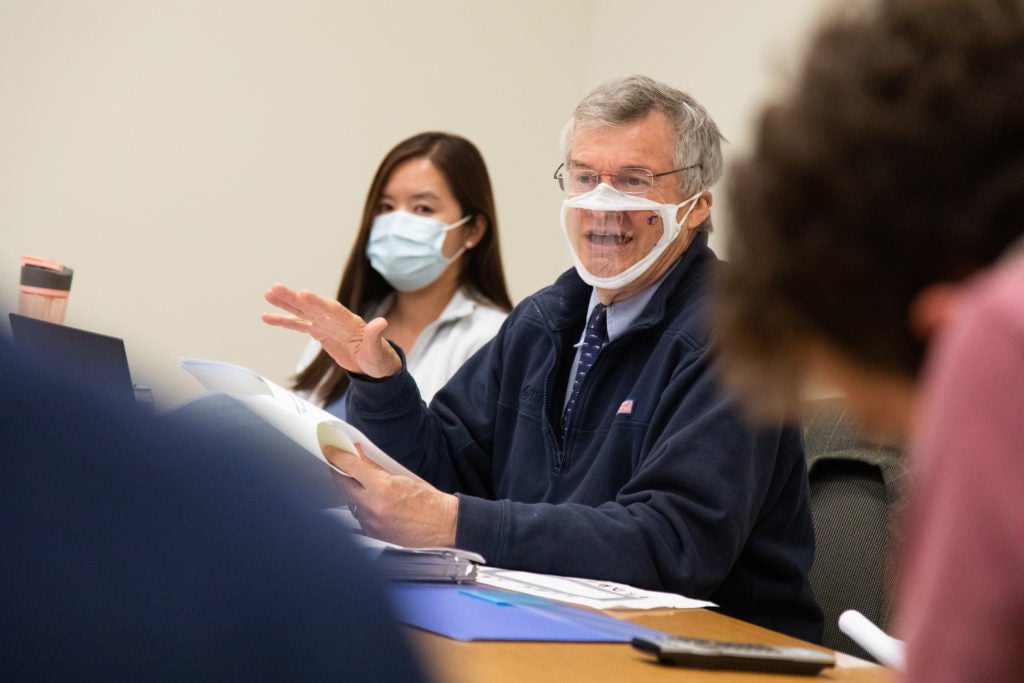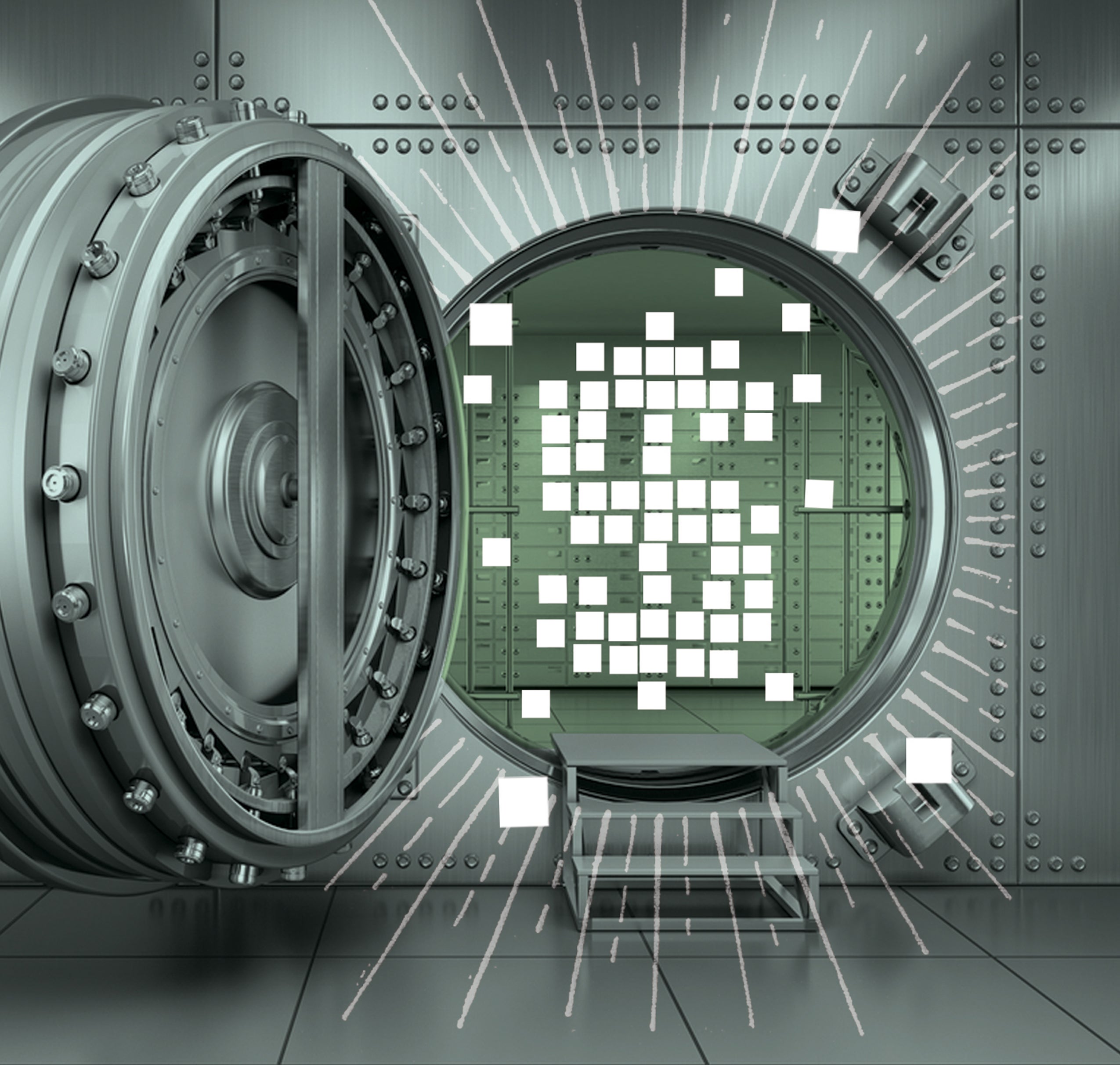Mention digital money, and many people think immediately of Bitcoin or one of its innumerable cryptocurrency cousins — those anonymous, volatile, and, depending on your point of view, liberating or nefarious, tokens championed by celebrities, businesspeople, and celebrity businesspeople like Elon Musk.
But e-money may soon be going mainstream, as federal policymakers study whether a central bank digital currency (also known as CBDC) could be right for the United States. Already, governments in the Bahamas and several Caribbean nations have issued digital versions of their dollars, while dozens of other countries, including South Korea, Nigeria, and Sweden, are exploring the possibility of launching their own. And in the U.S., the Federal Reserve recently released a white paper detailing its initial research on a CBDC.
This past fall, a Harvard Law School class called Designing a Central Bank Digital Currency for the United States, taught by Professor Howell E. Jackson J.D./M.B.A. ’82, took a closer look at the legal and policy implications of just such a system. The reading group, which Jackson says received enormous interest, attracted HLS students from many different backgrounds and home countries, he adds.
“As digital natives, many of our students have personal experience with cryptocurrencies,” he says. “With the prospect for a U.S. central bank digital currency on the horizon, this reading group was a great opportunity to really dig into these issues.”

Xiao Ma S.J.D. ’25 wanted to better understand an emerging technology that could have implications far beyond any one nation’s monetary system. “China launched its pilot digital currency program last year, and it was really a very heated topic there,” she says. “I think this potentially could be one of the areas of future U.S.-China competition.”
Unlike cryptocurrencies such as Bitcoin, a central bank digital dollar would be considered “fiat” currency, backed directly by the U.S. government, says Jackson. Such a designation would make it interchangeable with cash and would shelter it from the wild fluctuations in value for which crypto has been known.
A CBDC could make payments faster, lower transaction costs across the global marketplace, and increase access to banking among the nation’s poor and working class, proponents argue. But a digital currency also raises plenty of questions for regulators, with worries swirling about anonymity, money-laundering, and financing of terrorism — as well as broader concerns about its impact on financial stability and the monetary system itself.
Eliminating the middleman
To the average consumer, digital currency might look and act much like money in a traditional bank account, with the federal government standing in for their banker. But Joe Lillie J.D./M.B.A. ’22, another of Jackson’s students, pointed out that big differences are behind the scenes. “It’s like changing the inner workings and plumbing of the system, as opposed to one’s experience as an end user,” Lillie says, adding that many interactions between merchants, banks, and the Federal Reserve that occur regularly could “potentially be disintermediated.” In practice, that might mean that settling payments — or moving funds from a payer’s bank account to a recipient’s — could be done much more efficiently and quickly, leading to lower transaction costs, he says.
Such a system could also be more inclusive. “There is a whole population of people that either are ‘unbanked’ in the sense that they don’t have a bank account at all, or are ‘underbanked,’ in that they don’t have a lot of services,” says Lillie. “For those people, transaction costs for things like cashing a check or getting a money order can be very high.” In a system where everyone has an account through the federal government, though, low-income Americans might access services for a low or no cost.
Yet despite the promise of a central bank digital currency, Jackson’s course made clear that questions remain. Should policymakers design a CBDC where transactions are anonymous — like paying with cash — or are more like swiping a debit card? What types of rules would be necessary to protect account holders and prevent money-laundering and other criminal activity? And which federal agency, ultimately, would be responsible for maintaining accounts and interfacing with clients when issues inevitably arise?
In one class discussion, Jackson asked his students to consider the ramifications of a central bank digital currency on other national policy goals. “For the United States, there are some advantages to the current system and the primacy of the dollar,” says Lillie. “That includes the ability to enforce sanctions,” which could be threatened if CBDCs were adopted across the world and the U.S. dollar was no longer needed as the global reserve currency.
Adding to the richness of the classroom discussions were Margaret Tahyar, an attorney at Davis Polk and expert in financial institutions and technology who has been a lecturer in law at HLS in the past, and Robert Bench, an assistant vice president of the Federal Reserve Bank of Boston and an active participant in developing the technical framework for a CBDC for the U.S. The two have been joining all of Jackson’s classes via Zoom.
“It was wonderful to bring their firepower right into the classroom this semester,” says Jackson, adding that the unique setup of the class — Tahyar’s and Bench’s video feeds were projected at the front of the room — was a pandemic-era innovation that enabled his guests to participate despite busy careers of their own.
“Converting from paper cash into a digital currency is like having our economic lives reimagined.”
“Meg is one of the leading attorneys in the country on these issues, and Bob is playing a leading role in coordinating efforts of the Boston Fed to develop prototype CBDC software with computer scientists at MIT,” says Lillie. “To have their real-world perspectives, along with our academic and theoretical readings, was great. Whenever they or Professor Jackson shared their thoughts, I really perked up, because they are truly experts in this.”
Like Lillie, Ma says Jackson’s course was an exciting opportunity to learn about and discuss ideas so groundbreaking that many of the course readings were only months — or even weeks — old.
And though the phrase “central bank digital currency” may still be an unknown concept to many people, Ma thinks that is likely to change soon. “Converting from paper cash into a digital currency is like having our economic lives reimagined,” she says. “I think it will be an innovation comparable to that of the internet.”
